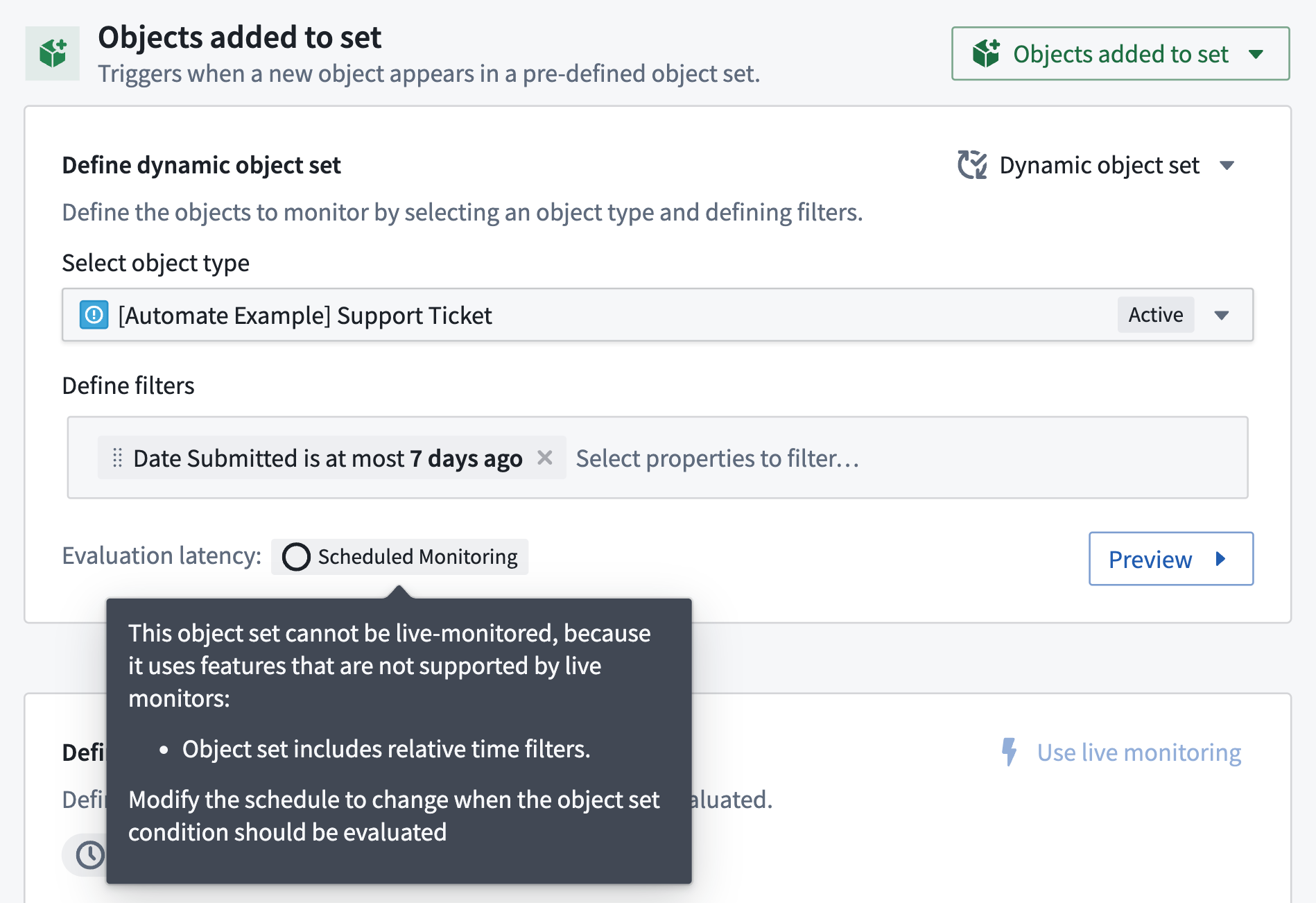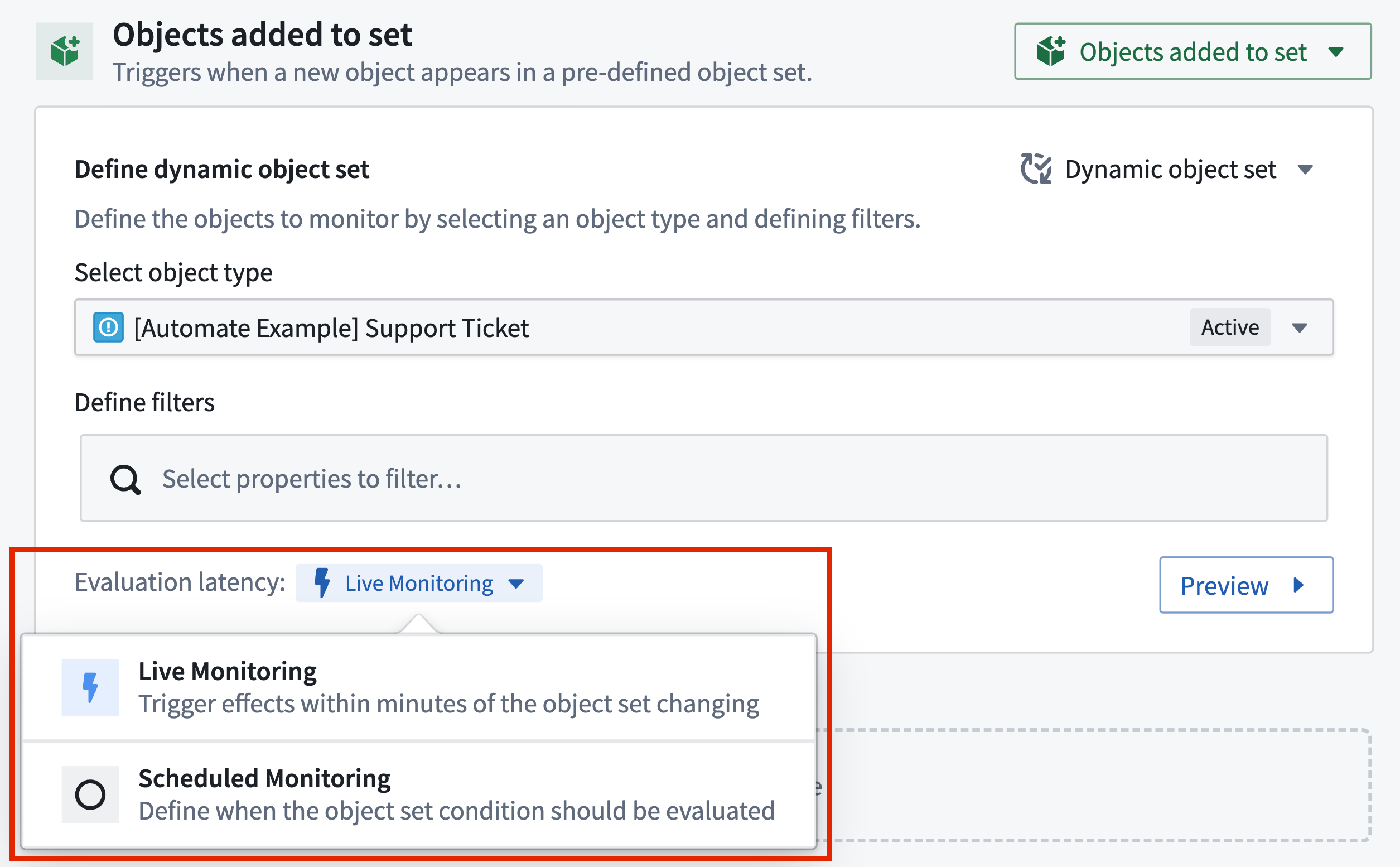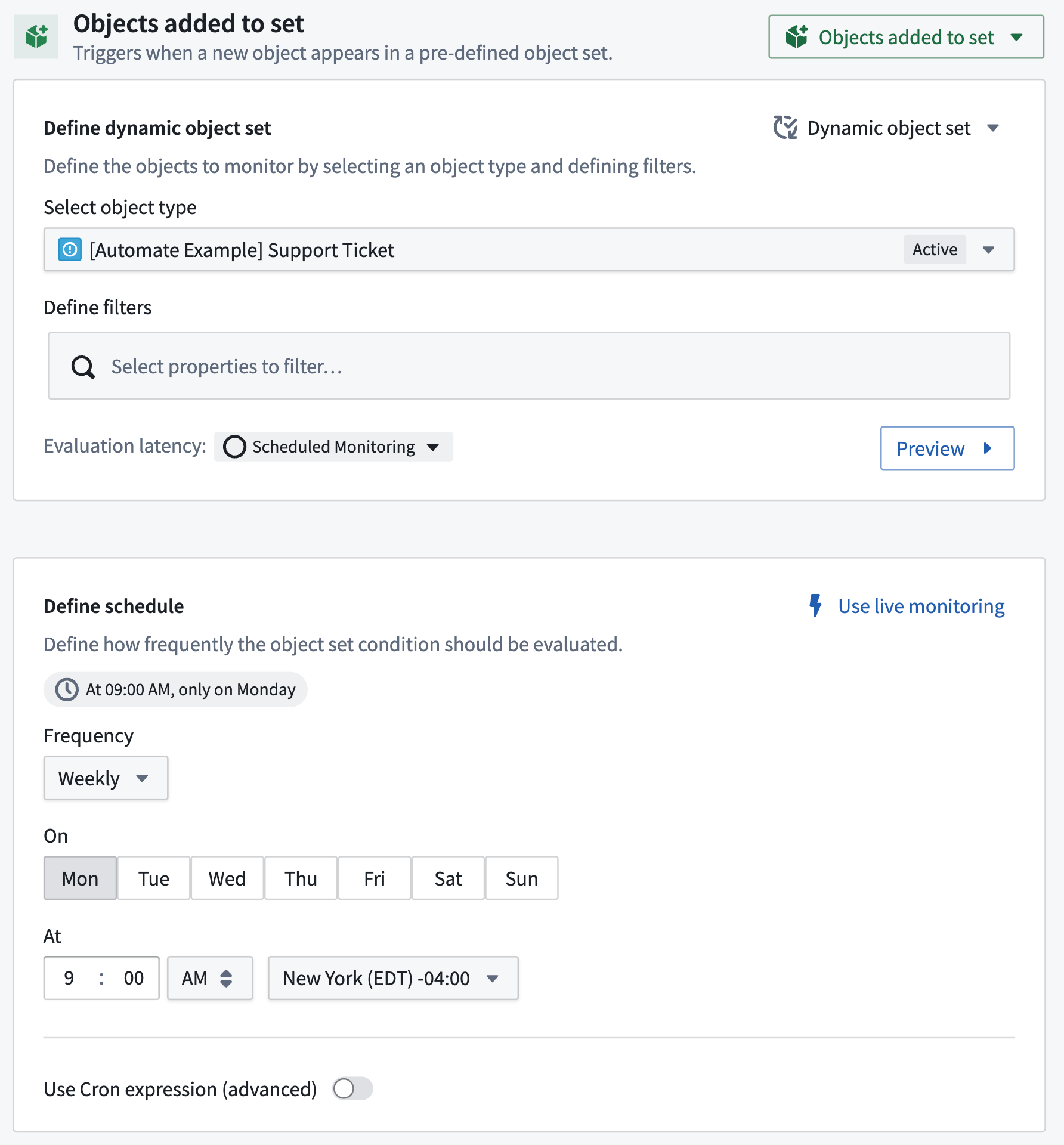Evaluation latency
The Automate application offers different monitoring latency modes for object set conditions: live monitoring, scheduled monitoring, and automation-dependent.
Live monitoring
When an object set is monitored live, evaluation is guaranteed within minutes of an object change being shown in the Ontology. This means that the Ontology indexing operation must be complete before the Automate application can pick up the change.
However, not all object set definitions support live monitoring. A prerequisite is that the object type is backed by Object Storage V2. Also, the following features are not supported by live monitoring:
- Relative time conditions
- More than one object type
- Joined object sets
- Certain filter types like prefixes, terms, and phrases
- Function-generated object sets
If you have migrated an object type from Object Storage V1 to Object Storage V2 and want to use live monitoring, you must re-save the automations after the migration. This will allow the Automate application to pick up the change and enable live monitoring.
Scheduled monitoring
Scheduled monitoring evaluates the condition according to a user-defined schedule. Conditions will default to scheduled monitoring when live monitoring is not supported. When this occurs, the scheduled monitoring label will explain which functionality is preventing live monitoring from being enabled.

Most conditions that support live monitoring also provide the option to switch to scheduled monitoring, either by toggling the evaluation latency or by adding a schedule. This allows you to check an object set condition at a specific point in time or on a regular cadence.

Digest emails are a typical use case for scheduled monitoring. For example, assume that at the beginning of each week, we want to receive a list of all Support Ticket objects created in the previous week. If there are no new support tickets, we do not want to receive a notification.
We can achieve this by using scheduled monitoring. In this example, we add a schedule for 8:00 AM on Monday to an objects added condition that includes all Support Ticket objects. Then, we only need to add a notification effect to render the list of all Support Ticket objects created in the previous week.

Review our weekly report example use case for a detailed walkthrough of how to configure an automation that sends digest emails.
Automation-dependent
Automation-dependent monitoring evaluates the condition dependent on another automation triggering.
Most conditions that support live monitoring also provide the option to switch to automation dependencies. Additionally, you can also use a wait-time parameter if desired.

Review Automation dependencies documentation for more information about this feature.